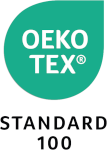
Certified as fiber free from harmful levels of more than 100 dangerous substances

Awarded for most innovative apparel and textile products by a panel of international experts

Named as one of the “Next Generation Solutions Prodivers” in MMCF

Selected as one of the Ten New Innovators in its 2024 Innovation Programme














